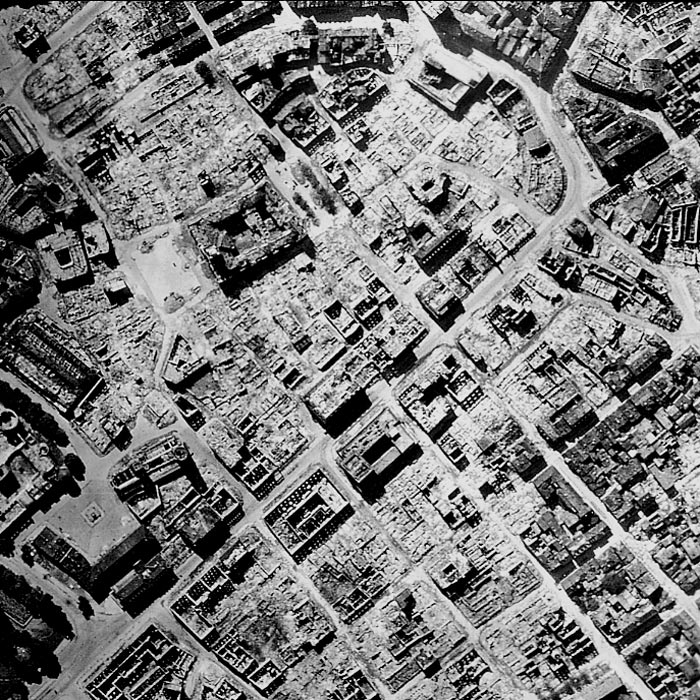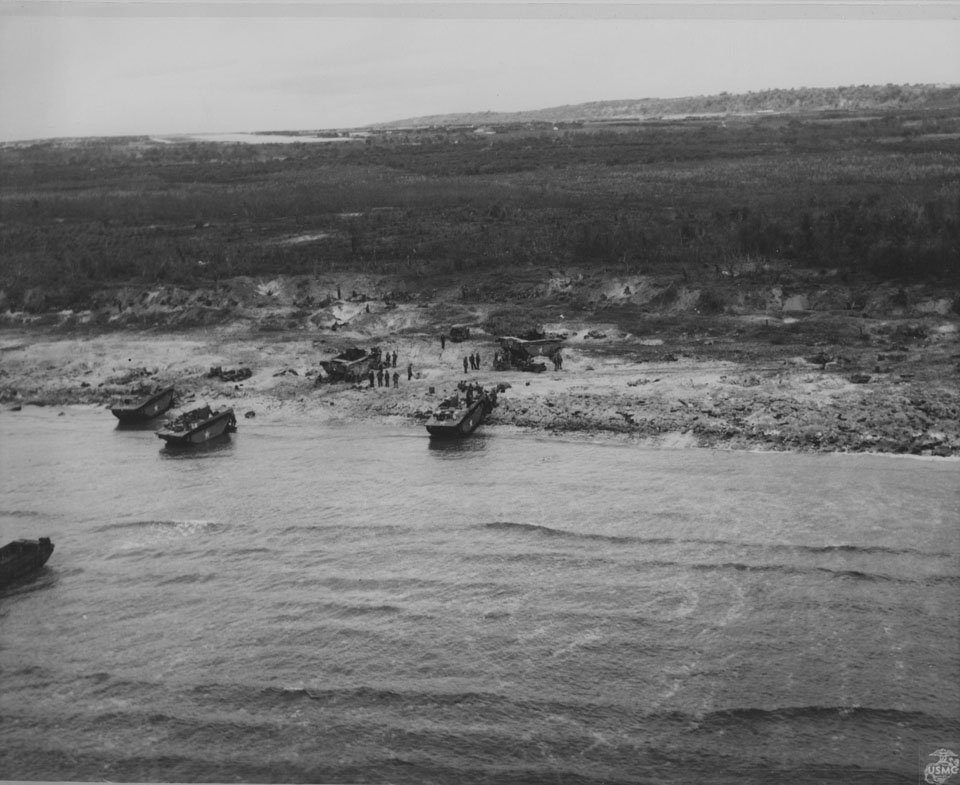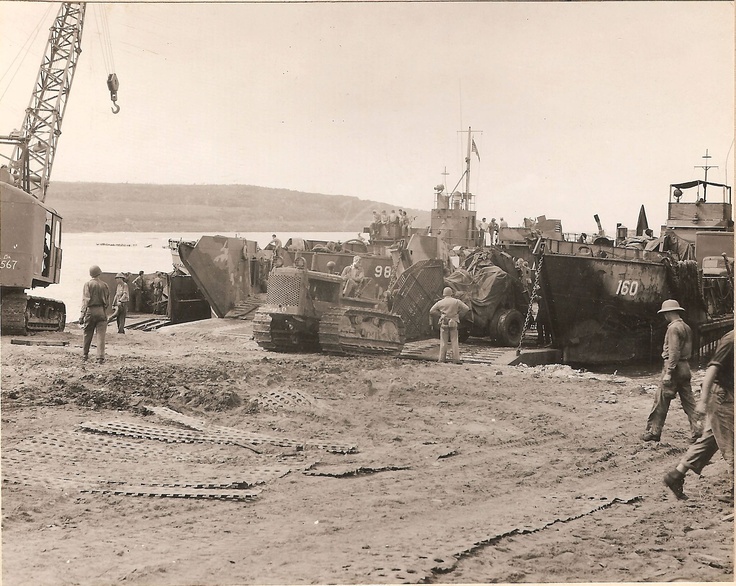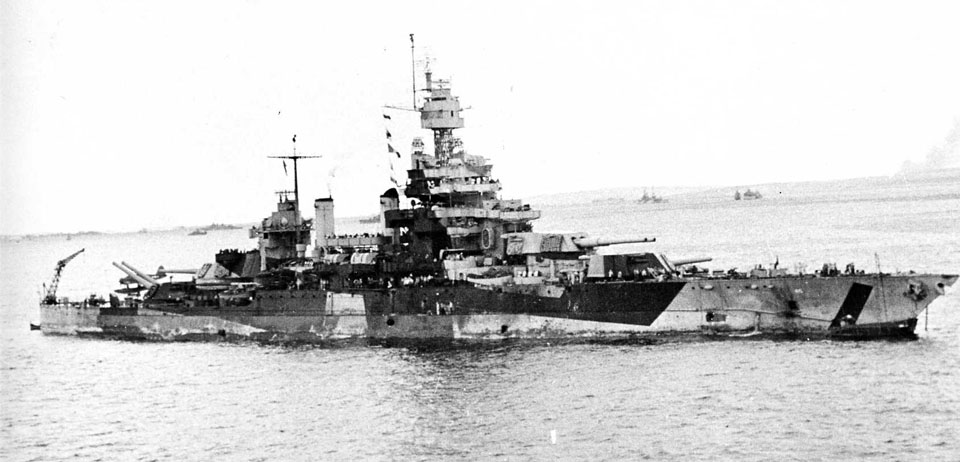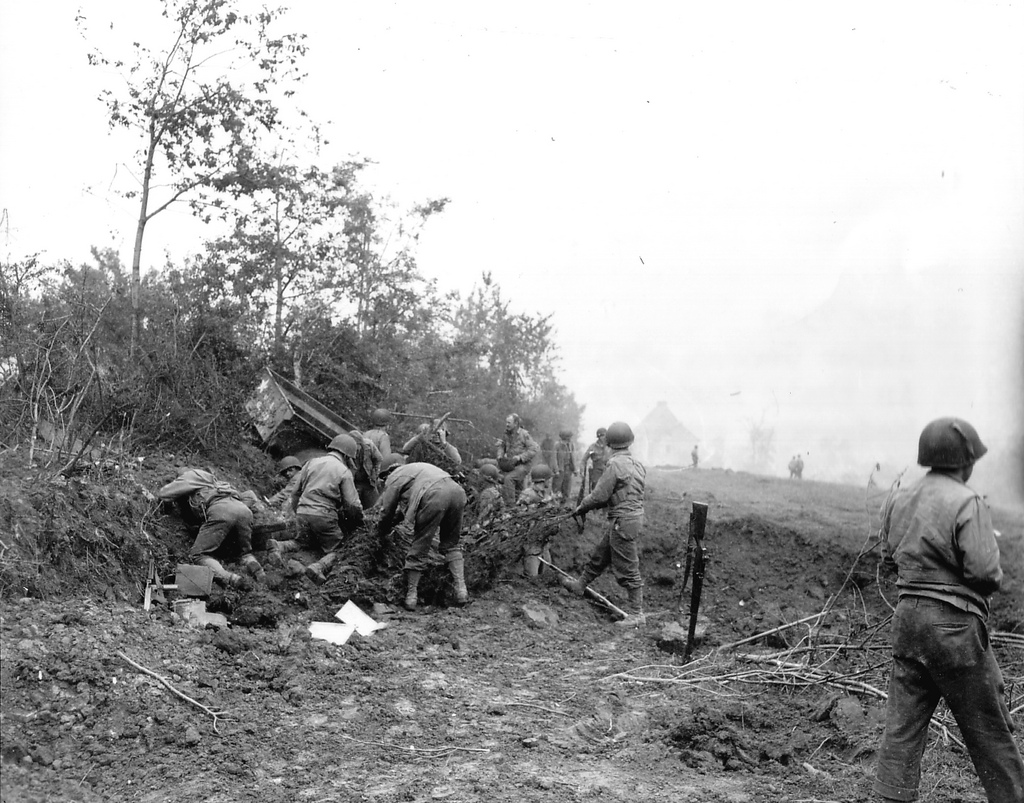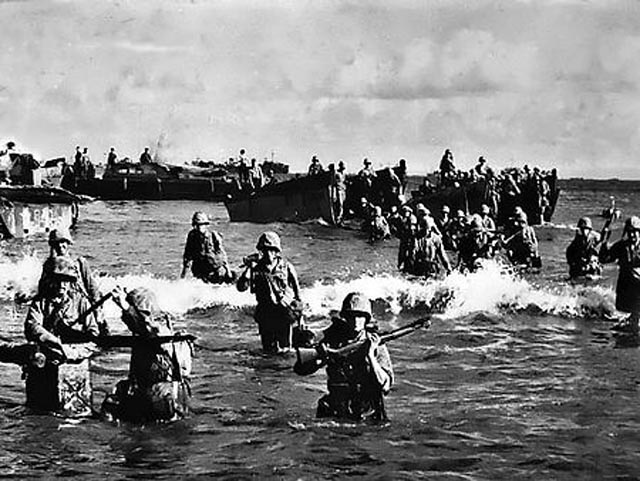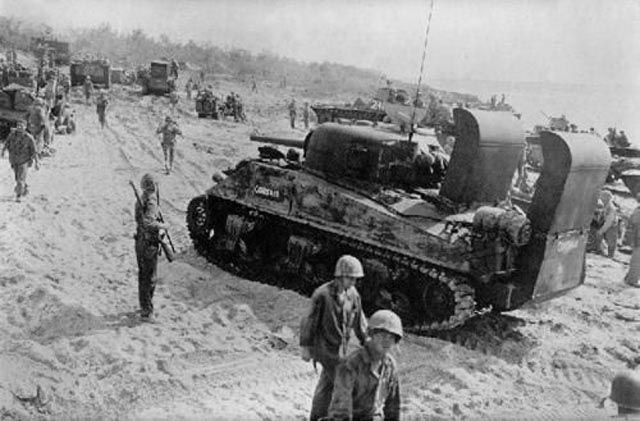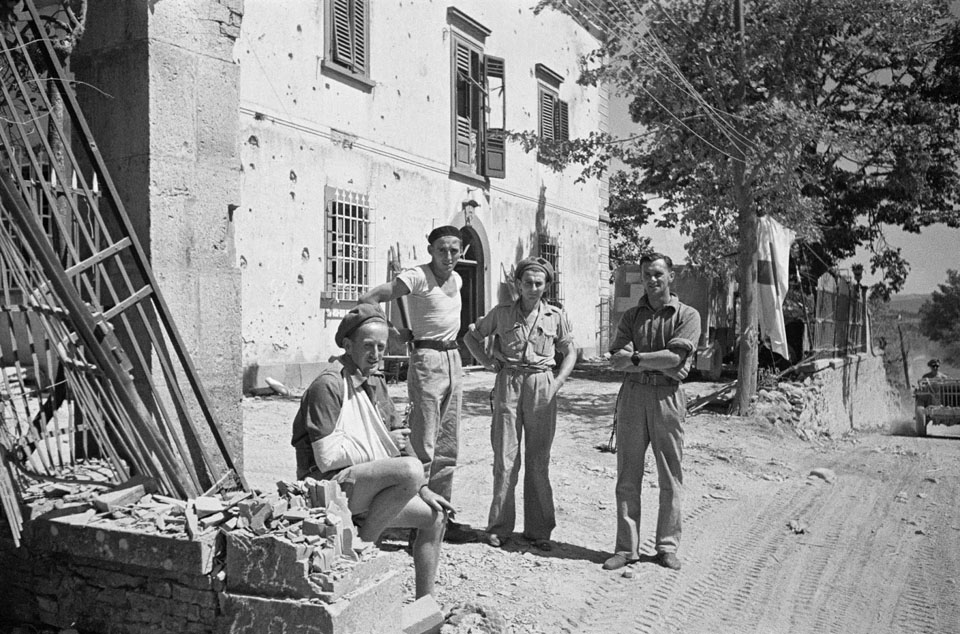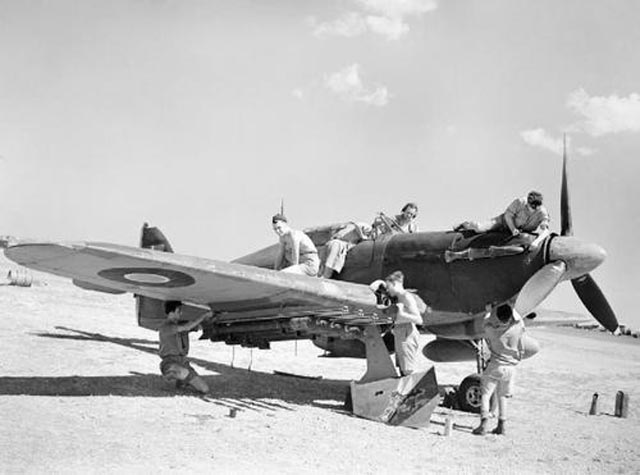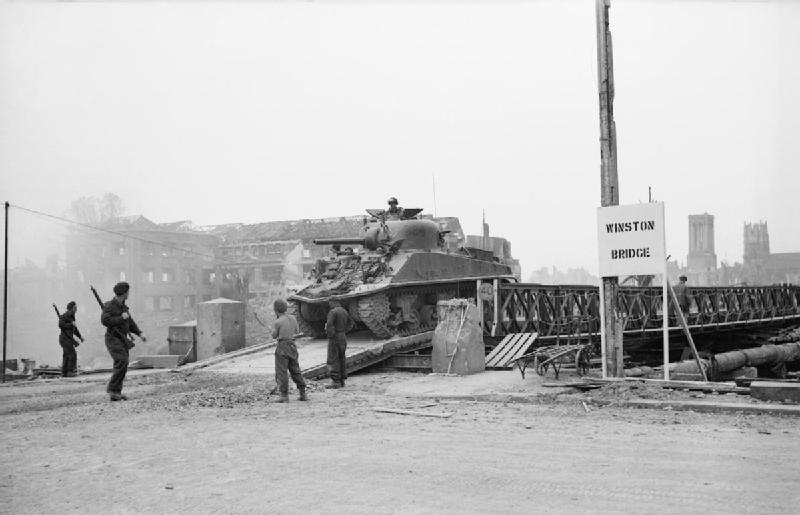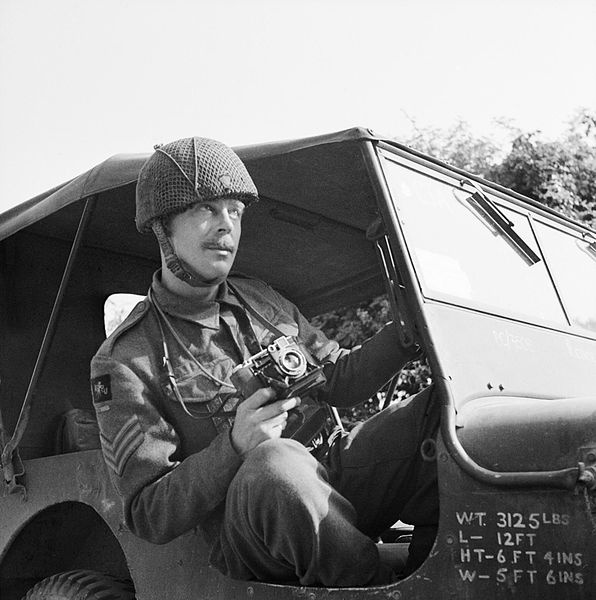Air Operations, CBI
BURMA- 8 10th Air Force B-25s attack Mohnyin and Naungtalaw.
- 28 P-40s attack Myitkyina.
- 14 P-51s attack the Kamaing and Mogaung areas.
- 13 341st Medium Bomb Group B-25s and 20 14th Air Force P-40s attack rail facilities at Sienning.
- 9 B-25s and 20 P-40s attack Puchi.
- 46 P-40s attack Yangtze River traffic and many targets of opportunity.
- 22 P-40s attack the airfield at Pailochi.
- 7 P-51s dive-bomb the White Cloud Airfield at Canton.
- A 118th Tactical Reconnaissance Squadron P-51 downs a Ki-43 'Oscar' fighter during a morning engagement near Hengyang.
- A 341st Medium Bomb Group B-25 is lost in a crash near Lingling following an engine failure.
- 3 14th Air Force P-40s conducting an armed reconnaissance attack rail facilities at Ben Thuy and junks and barges along the coast.
Air Operations, East Indies
V Bomber Command B-24s attack antiaircraft batteries at Saumlakki, but the start of an aerial offensive against East Indies targets in support of an upcoming offesive in the Sansapor area of New Guinea is delayed by bad weather.
[Air Operations, Europe
RAF BOMBER COMMANDDaylight Ops:
- ;28 Lancasters and 8 Mosquitos of Nos. 3 and 8 Groups bomb the flying bomb sites at Acquet and Prouville without a loss.
- 3 Mosquitos fly Ranger patrols to northern Germany and attack trains.
- 1 Mosquito is lost.
- 461 Lancasters and 153 Halifaxes are sent to Stuttgart. This is the first of 3 heavy raids in 5 nights on this city. The only report of the damage here is a composite one from all 3 raids. The 3 raids cause the most serious damage of the war in the central districts of Stuttgart which, being situated in a series of narrow valleys, has eluded Bomber Command for several years. They are now devastated and most of Stuttgart's public and cultural buildings are destroyed. The second of the 3 raids, on the night of 25/26 July, is the most successful.
- 17 Lancasters and 4 Halifaxes are lost on this night.
- 104 Lancasters and 9 Mosquitos of Nos. 5 and 8 Groups attack the oil depot at Donges again. Reports from the raid say the target is 'devastated'.
- 3 Lancasters are lost.
- 100 Halifaxes, 10 Mosquitos and 2 Lancasters of Nos. 6 and 8 Groups attack the flying bomb site at Ferfay, but the Master Bomber allow only 73 aircraft to drop their loads.
- 1 Halifax is lost.
- Support and 107 aircraft from training units make a diversionary sweep, 4 Halifaxes lay mines off Brest and Lorient, 12 aircraft are on Resistance ops, and there are 46 Mosquito patrols and 36 RCM and 4 OTU sorties.
- There are no losses.
FRANCE:
- Operation COBRA, the scheduled air offensive leading up to an all-out puch by the US 1st Army to break out of the Normandy beachhead is delayed by poor flying conditions over the target area. Nevertheless, a total of 487 8th Air Force heavy bombers, escorted by 478 VIII Fighter Command fighters, attack alternate tactical targets in the Normandy area.
- Three VIII Fighter Command fighter groups strafe tactical targets in the battle zone.
- 3 heavy bombers and 5 fighters are lost; misdropped bombs kill 20 US soldiers on the ground and wound about 60
- 143 VIII Fighter Command P-51s conduct a sweep over the Lechfeld and Leipheim Airdromes. 3 single-engine biplane trainers are downed by 359th Fighter Group P-51 pilots over Neu-Ulm at 1220 hours.
FRANCE:
- IX Bomber Command B-26s and A-20s originally scheduled to take part in the Operation COBRA missions are diverted against several ammo and fuel dumps.
- 9th Air Force fighter-bombers attack bridges and supply dumps in the US 1st Army battle area.
- The 344th Medium Bomb Group, in B-26s, destroys par of a vital Loire River bridge near Tours.
- USAAF fighter pilots down 10 Luftwaffe fighters over France between 1300 and 1750 hours.
ITALY:
- 12th Air Force B-25s and B-26s attack several bridges.
- XII TAC A-20s attack fighter-bombers attack rail lines in the Po River valley.
FRANCE:
- In southern France, 15th Air Force B-24s attack the Les Chanoines and Valence/La Tresorerie Airdromes.
- 15th Air Force B-24s attack the harbor at Genoa.
- 15th Air Force B-17s attack a tank factory and ball-bearing plant at Turin.
- 15th Air Force heavy bombers attack troop concentrations at four locations.
- Escort fighters attack targets of opportunity.
Air Operations, Marianas
- 318th Fighter Group P-47s attack Rota and support US Marine Corps ground forces on Tinian.
- Task Force 52 FMs and TBMs (armed with bombs and rockets) mount 89 effective sorties against Japanese ground positions on Tinian.
Air Operations, New Guinea
- 18 V Bomber Command B-25s and A-20s attack the airfield at But.
- V Fighter Command P-47s attack supplies at Sauri.
- P-39s attack bridges and supply dumps in the Suain area.
Baltic Sea
U-1164 is sunk during an RAF bombing raid on Kiel.
| Class | Type VIIC/41 |
| CO | Kaipitänleutnant Hans Wengel |
| Location | Baltic, Kiel |
| Cause | Air attack |
| Casualties | Unknown |
| Survivors | Unknown |
CBI
CHINAThe garrison of the town of Hengyang, although cut off and unable to receive any supplies for a week owing to the bad weather conditions, continues to hold out bravely against the Japanese attacks.
[Eastern Front
Lublin falls to Rokossovsky's troops. Other units of 1st Ukraine Front overrun the site of Majdanek Concentration Camp, the first such camp to liberated. About half a million people, mostly Jews, had been murdered there. These troops also force the passage of the San River northwest of Lvov.
NORTHERN SECTORAs the III SS Panzer Corps consolidates its position in Narva, the Soviet Narva Operational Group launches strong attacks against the German positions.
POLANDThe Soviets capture Lublin as the 1st Panzer Army pulls out of Lvov. The Soviet 3rd Guards Tank Army takes Yavorov.[MORE]
[Germany, Policy
As a display of loyalty the German armed forces are ordered to replace the normal military salute with the Nazi salute, to be accompanied by the words 'Heil Hitler'.
[Italy
The Americans reach Pisa.[ITALY]
[Marianas
TINIANRear-Adm Harry W. Hill's TF 52 lands Gen Harry Schmidt's V Amphibious Corps on Tinian. Fire support is provided by the battleship groups led by Jesse B. Oldendorf and Walden L. Ainsworth as in the earlier Marianas operations. The landing force is composed of 2nd and 4th Marine Divisions and numbers 15,600 men. Col Keishi Ogata and Adm Kakuji Kakuta are the Japanese commanders and their force is approximately 6,200 strong. After a preparatory bombardment by naval guns and by aircraft, some carrier-borne and some taking off from Saipan, the 2nd Marines are first involved in a feint landing on the southwest of the island while the 4th Marines in fact land in the northwest, with additional support form 156 heavy guns sited on neighboring Saipan.
The Japanese garrison is drawn off to the southwest by a clever maneuver by the 2nd Marine Division, making a dummy landing opposite the little town of Tinian. The assault forces succeed in establishing a solid beachhead and heavy Japanese attacks are beaten off with great loss. Napalm is used in these engagements for the first time in the Pacific. It is also being introduced in Europe at this time. Japanese artillery hits the battleship Colorado (BB-45) and the destroyer Norman Scott (DD-690).
During the afternoon Ogata's troops try to reach the north of the island, where the landing has been securely carried out, but suffer severe losses from a hail of napalm bombs dropped by US aircraft. During the night 600 Japanese attack the beachhead, but are wiped out. Later attacks, in which they use tanks, are beaten off with heavy losses. At dawn the Marines advance; they count 1,241 Japanese bodies.
GUAMGen Geiger orders an attack to link the beachheads and secure the Orote Peninsula on the 26th. The 77th Division completes the relief of the 1st Provisional Marine Brigade in the southern beachhead and holds it with the 305th and 306th Regiments abreast, with the 305th on the north. The 3rd Marine Division continues to meet bitter opposition while endeavoring to take the heights commanding the northern beachhead.
[New Guinea
TF TYPHOON embarks at Maffin Bay for the Sansapor-Mar operation.
In the Aitape area, the North Force of teh PERSECUTION Covering Force repels the last enemy attempts, in limited strength, to secure a crossing of the Driniumor during the night of the 24th. The region now becomes relatively quiet.
Near Afua about 2,000 Japanese are still surrounding units of the US 112th Cavalry and stopping the 127th Infantry Regiment from coming to their rescue.
[Western Front
The 28th Div lands in France. Allied air bombardment begins in preparation for the US COBRA attack just west of St Lô. It is scheduled to begin now but bad weather, hampering the air support, causes a postponement.[WF]
[Images from July 24, 1944
|
|
|
|
|
|
|
|
|
|
|
|
Preparing the Ground for Operation COBRA |
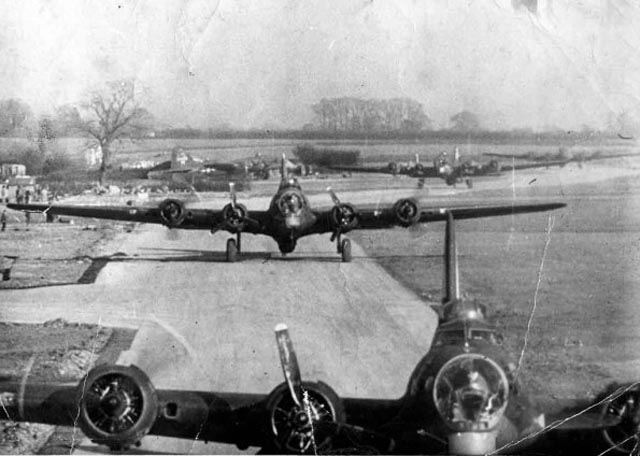 |
